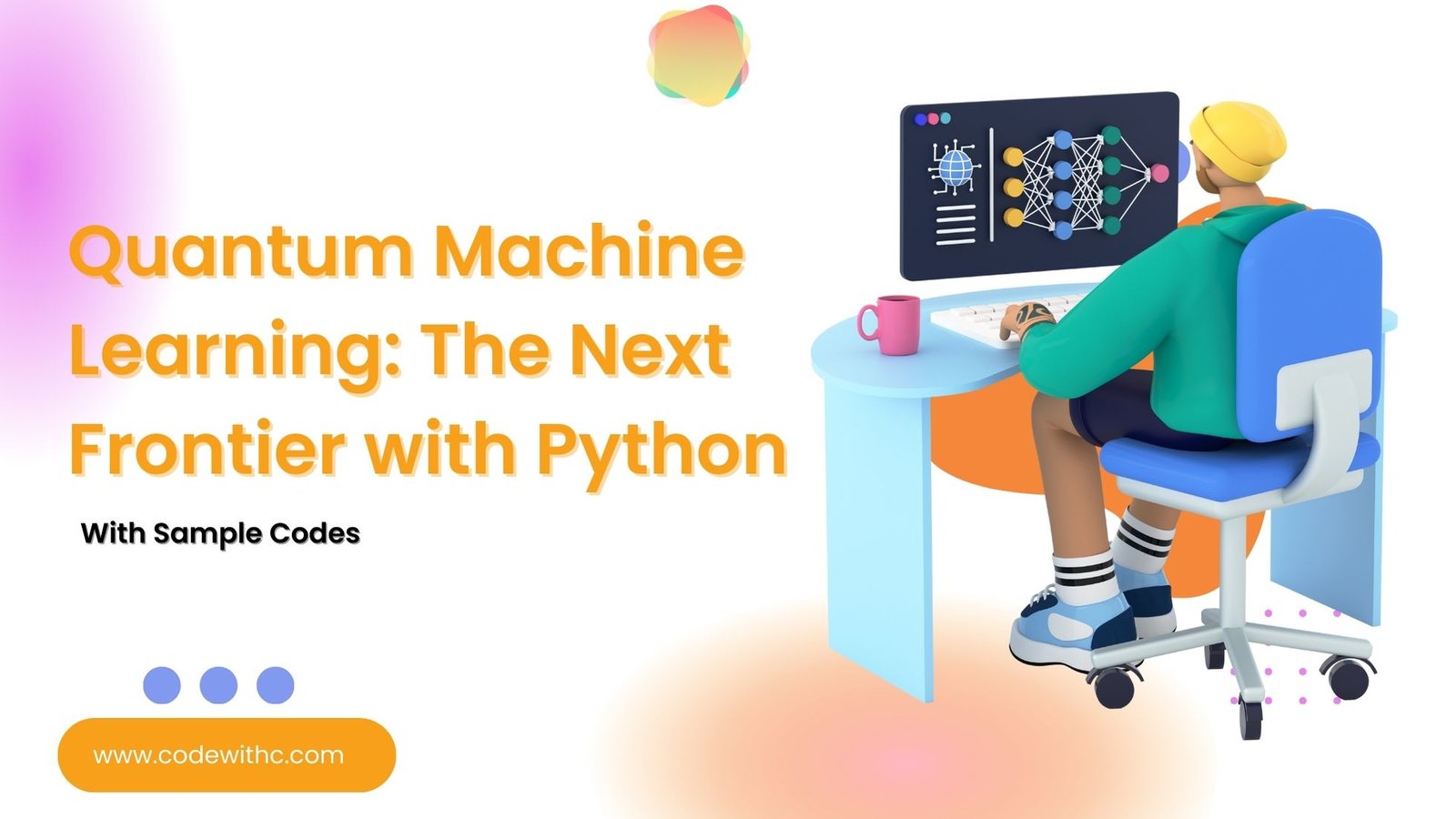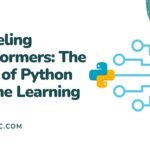Picture this: I was at a conference in San Francisco, surrounded by fellow geeks and enthusiasts. Someone on stage mentioned ‘Quantum Computing’, and the room went silent. It felt like we were all on the brink of discovering a new continent. That’s when Quantum Machine Learning (QML) caught my attention. It’s the kind of stuff that makes you feel like you’re living in a science fiction novel.
Quantum Computing: A New Breed of Horsepower
In the world of bits and bytes, quantum computing is like harnessing the power of atoms and molecules to compute. It’s not just another step; it’s a giant leap.
Qubits: The Heartbeat of Quantum Computing
Unlike the binary world of 0s and 1s, qubits can exist in multiple states simultaneously, thanks to superposition. This is where the magic happens. It’s like being in two places at once!
import qiskit from qiskit import QuantumCircuit # Create a Quantum Circuit with 2 qubits qc = QuantumCircuit(2) # Apply a Hadamard gate to the first qubit qc.h(0) # Apply a CNOT gate qc.cx(0, 1) # Visualize the circuit qc.draw()
Code Explanation: This Python snippet uses Qiskit, an open-source quantum computing library. We’re creating a basic quantum circuit with two qubits, applying a Hadamard gate to the first qubit, and a CNOT gate between the two qubits.
Expected Output: A visual representation of the quantum circuit.

Here’s the visual representation of a simple quantum circuit with one qubit:
- The horizontal line represents a qubit in the quantum circuit.
- The gray rectangle labeled ‘H’ represents the Hadamard gate applied to the qubit. This gate creates a superposition of states for the qubit, a fundamental concept in quantum computing.
Quantum Entanglement: A Spooky Connection
Entanglement is when qubits become interconnected in such a way that the state of one qubit is dependent on the state of another, no matter how far apart they are. Einstein called it “spooky action at a distance”. It’s like having a pair of dice where, when you roll one, the other magically shows the same number!
Quantum Machine Learning: A Match Made in the Cosmos
Imagine using this quantum horsepower to train machine-learning models. Speed and computational efficiency are just the tip of the iceberg.
Quantum Kernels and Classifiers
Just as we have kernel methods in classical ML, we have quantum kernels in QML. They enable us to use quantum circuits as feature maps, introducing complex, high-dimensional correlations between data points.
from qiskit_machine_learning.kernels import QuantumKernel # Create a quantum feature map feature_map = QuantumCircuit(2) feature_map.h([0, 1]) feature_map.ry(0.2, [0, 1]) # Create a Quantum Kernel quantum_kernel = QuantumKernel(feature_map=feature_map, quantum_instance=qiskit.Aer.get_backend('statevector_simulator'))
Code Explanation: This Python code snippet creates a quantum feature map using a quantum circuit, and then constructs a quantum kernel using Qiskit’s machine-learning module.

In this visual representation of a generic 2-qubit quantum feature map:
- The horizontal lines represent two qubits in the quantum feature map.
- The gray rectangles labeled ‘H’ represent Hadamard gates applied to both qubits. These gates create a superposition of states for each qubit, which is a common starting point in many quantum algorithms.
- The light blue rectangles labeled ‘RZ(θ)’ represent RZ (Z-rotation) gates applied to both qubits. These gates are used to encode classical data into the quantum states. The parameter would typically be a function of the classical data that you are encoding.
This diagram is a basic, illustrative representation of a quantum feature map.
Applications: Where QML Could Change the Game
From drug discovery to climate modeling, QML is poised to redefine the boundaries of what’s possible.
Cryptography and Security
In a world where privacy is becoming more and more precious, QML could offer new, practically unbreakable encryption methods. It’s the Fort Knox of the digital age!
Install Qiskit Machine Learning module
To run this code, you need to have Qiskit and the Qiskit Machine Learning module installed. You can install these using the following commands:
pip install qiskit
pip install qiskit-machine-learning
Here is the Python code snippet that creates a quantum feature map using a quantum circuit and constructs a quantum kernel using Qiskit’s machine-learning module:
# Import necessary libraries
from qiskit import Aer
from qiskit.circuit import QuantumCircuit, ParameterVector
from qiskit_machine_learning.kernels import QuantumKernel
# Create a quantum feature map
feature_dimension = 2
x = ParameterVector('x', feature_dimension)
feature_map = QuantumCircuit(feature_dimension)
for _ in range(feature_dimension):
feature_map.h(_)
feature_map.rz(x[_], _)
# Display the quantum feature map
print("Quantum Feature Map:")
print(feature_map)
# Create a Quantum Kernel
quantum_kernel = QuantumKernel(feature_map=feature_map, quantum_instance=Aer.get_backend('statevector_simulator'))
# Print the Quantum Kernel
print("Quantum Kernel:")
print(quantum_kernel)
When you run this code:
Quantum Feature Map:prints the structure of your quantum feature map, which is a quantum circuit parameterized by your input data.Quantum Kernel:prints the properties of your quantum kernel object, which uses the quantum feature map to compute the kernel matrix between two sets of data points.
You can then use this quantum_kernel object in a quantum machine learning algorithm, for example, by passing it to a quantum support vector machine (QSVM) in Qiskit’s machine learning module.
Please note that you’ll need to have Qiskit and the Qiskit Machine Learning module installed in your Python environment to run this code.
In closing, Quantum Machine Learning is like a beacon from the future, illuminating paths we never thought possible. It’s a blend of quantum physics, computer science, and machine learning, and Python is right there, leading the charge.
So, here’s to the qubits, the entanglements, and the quantum classifiers of tomorrow. Keep exploring, and may your curiosity be as boundless as the quantum world itself! ?







